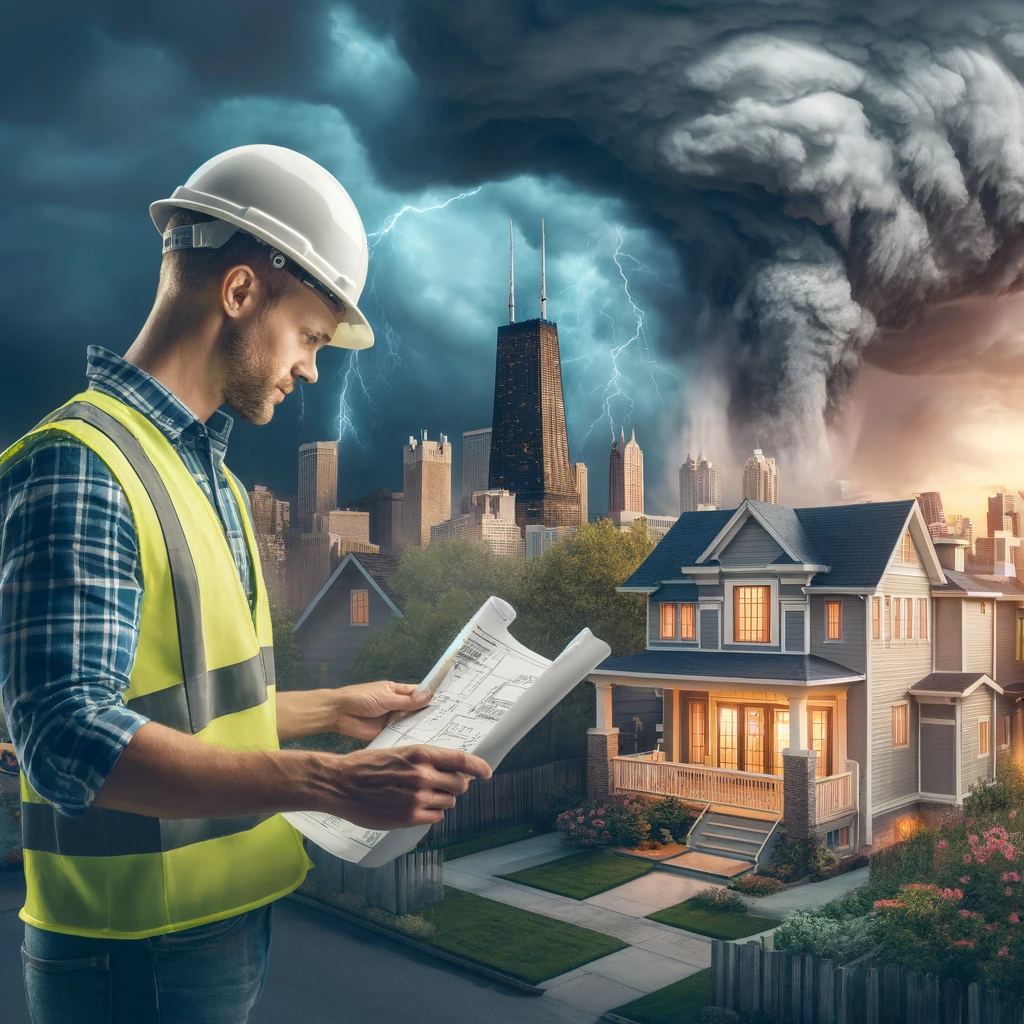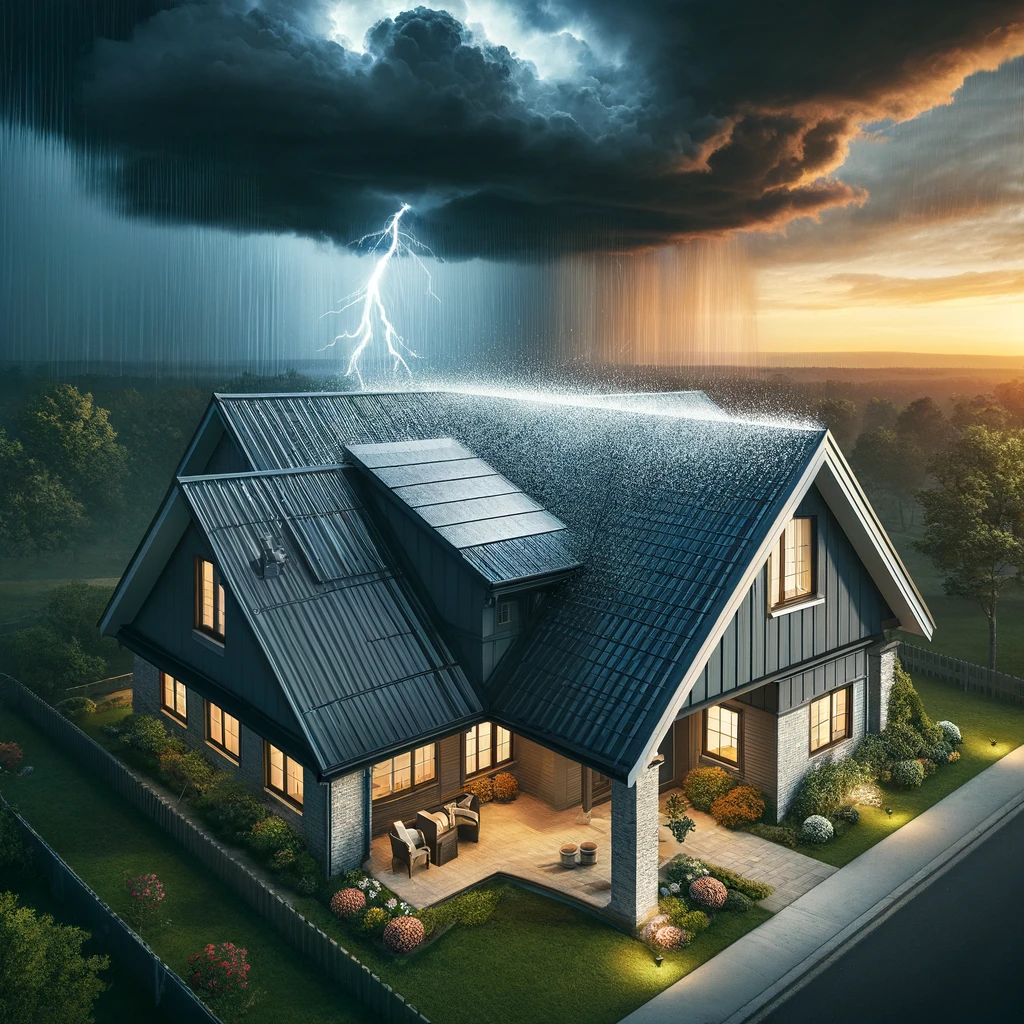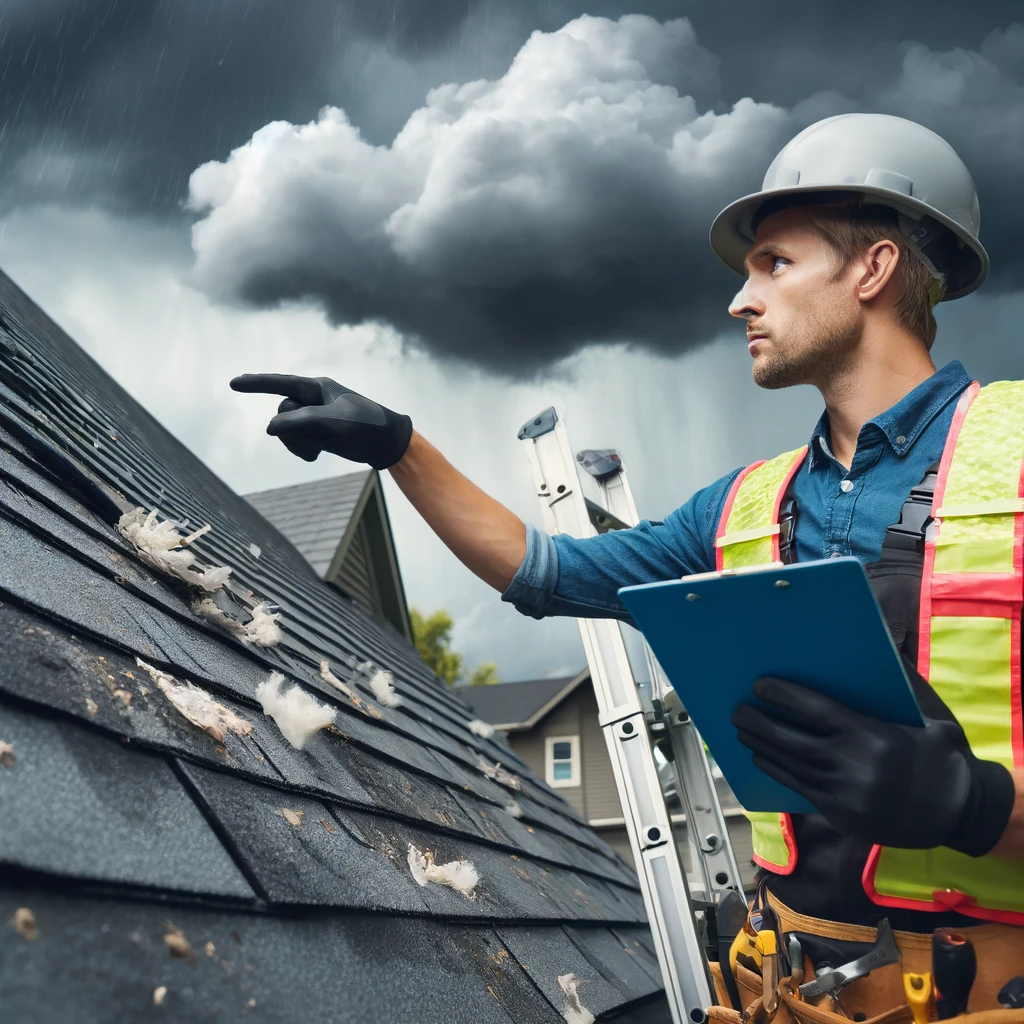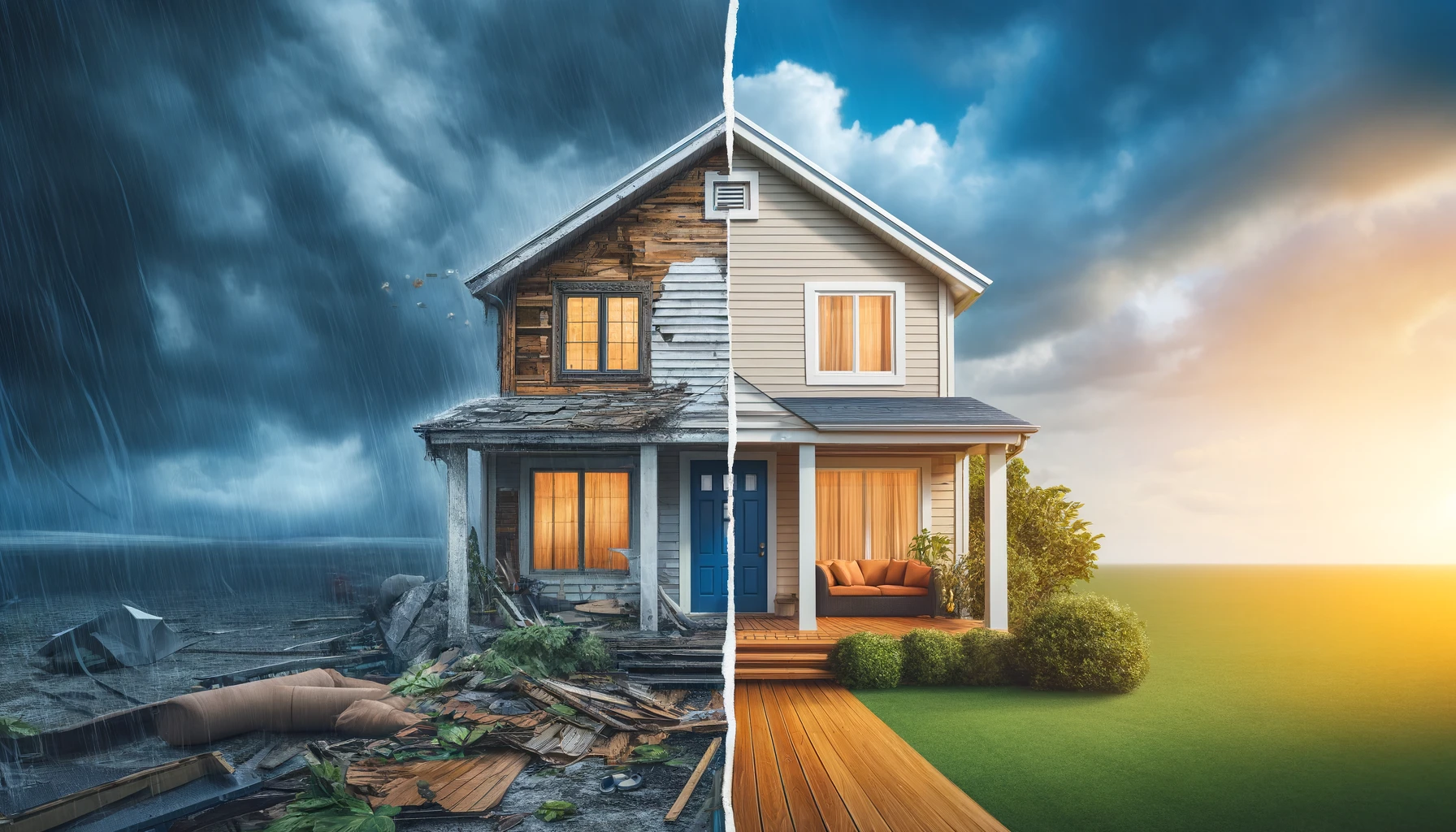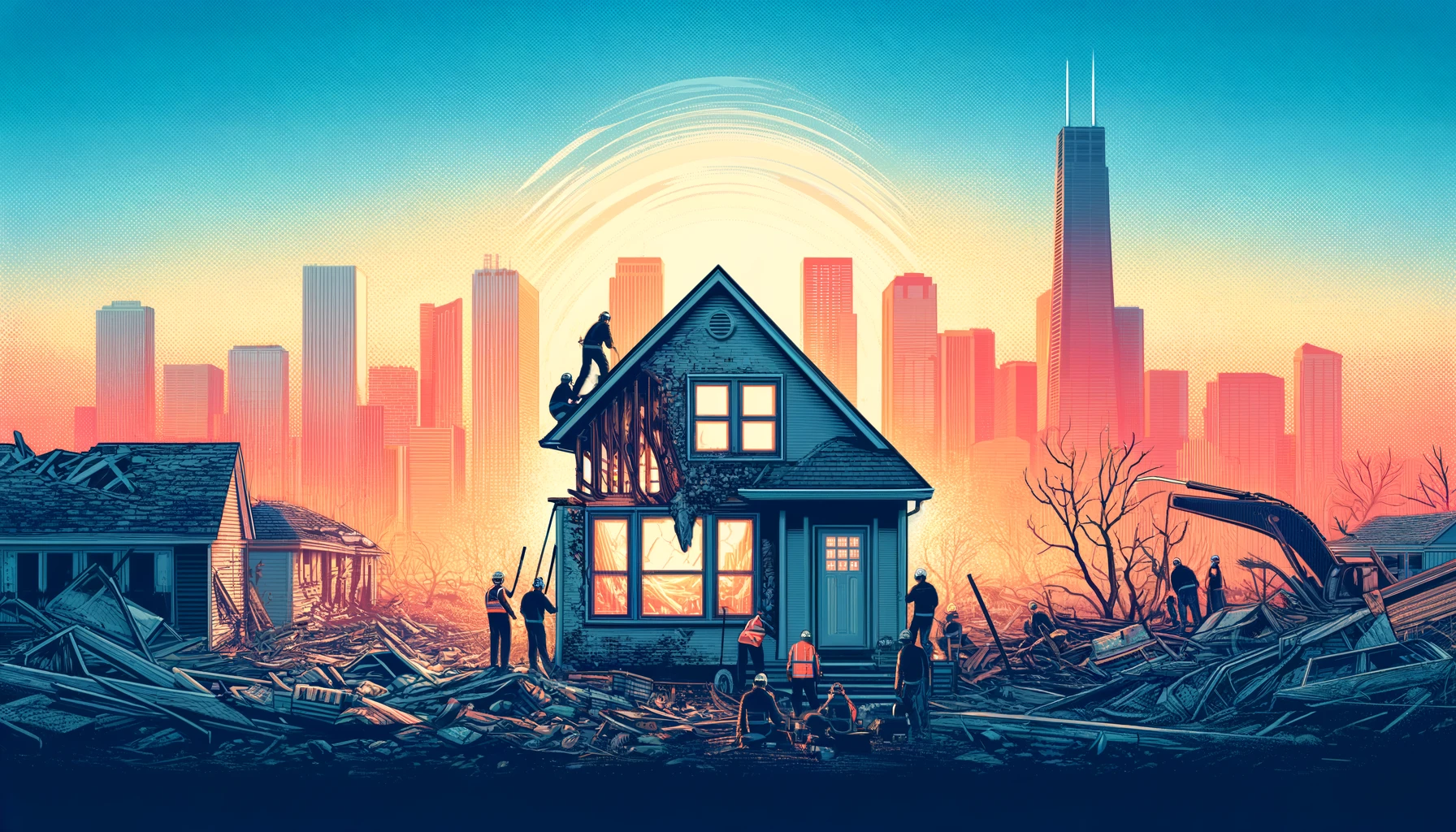In Illinois and Chicago, the aftermath of storms like hurricanes can leave significant damage to properties. Understanding how to identify storm damage and navigate the building code requirements for repairs is crucial for property owners and repair professionals. This blog provides a detailed guide on assessing storm damage, distinguishing it from other types of damage, and applying the relevant building codes to ensure compliance and timely restoration.
Identifying Storm-Related Damage
Storms can cause a variety of structural damages, including those from flooding, high winds, and other severe weather conditions. Distinguishing storm-related damage from deterioration due to aging or poor construction is critical for effective repairs. For instance:
Flooding Damage
- Saturated Building Components: Look for visible water lines on walls and other building materials indicating past water levels that have saturated the components.
- Structural/Foundation Instability: Be aware of signs of foundation issues like cracks or uneven flooring, which may result from soil erosion or scour caused by rapid water movement.
- Hydrostatic Forces: Check for displacement of structures, such as shifting or warping, that could be the result of hydrostatic pressure exerted by standing water during a flood.
Wind Damage
- Exterior Finishes Compromised: Look for areas where the external siding, finishes, or cladding have been damaged or stripped away by the force of high winds.
- Water Intrusion Indoors: Identify any internal water damage that may have been caused by openings in the building envelope, such as broken windows or holes created by debris carried by strong winds.
- Compromised Structural Integrity: Inspect for signs of instability or potential collapse in the building’s structure, which could be due to the wind-induced movement of structural members and their connections.
Conditions Commonly Misidentified as Storm Damage
- Normal Wear and Structural Movement: Recognize cracks or separations in the building structure that result from expected movements, like thermal expansion or minor settling, not storm impact.
- Pre-Existing Water Damage: Distinguish interior water damage that originates from already-existing openings or from areas with inadequate flashing or sealing, unrelated to recent storm events.
- Unfounded Compromised Openings: Assess windows and doors thought to be compromised by high winds but are actually intact and have withstood the weather without damage.
- Moisture from Previous Issues: Identify moisture problems in substrates beneath roofs or wall claddings that stem from longstanding conditions or lack of maintenance rather than recent storm exposure.
- Pre-Existing Tile Damage: Acknowledge corner chips or cracks in roof tiles that are likely the result of handling during shipping, installation processes, or routine foot traffic rather than storm-related stresses.
Navigating Building Codes in Illinois and Chicago
The building codes in Illinois and Chicago may include both state adoptions and local ordinances that dictate how repairs should be conducted:
- Understanding Local Codes: Local codes often adopt versions of the International Existing Building Code (IEBC) with modifications to address local needs. It’s important to consult with local building departments for specific codes applicable to storm damage repairs.
- Compliance with IEBC: The IEBC provides guidelines for repairing existing buildings to ensure safety and compliance. It includes standards for materials, construction methods, and whether repairs should bring a building up to new building standards.
Common Mistakes in Applying Building Codes
Mistakes in interpreting building codes can delay repair processes and lead to non-compliance issues. Common errors include:
- Misidentifying the type of damage which can lead to inappropriate repair strategies.
- Underestimating the extent of damage, thus not performing comprehensive repairs that comply with building codes.
Application of the Building Code for Repairs
When applying building codes, it is essential to follow the prescribed standards for the type of repair required. The IEBC outlines conditions under which repairs should be made, often suggesting that materials and methods used in the original construction be employed when feasible.
Substantial Damage and the “50% Rule”
In areas governed by the National Flood Insurance Program (NFIP), the “50% Rule” applies, which considers a structure substantially damaged if the cost of repairs equals or exceeds 50% of the building’s pre-damage market value. Understanding this rule is crucial for compliance and insurance purposes.
Understanding the “50% Rule” in Post-Storm Repairs
Post-storm repairs can be a complex process, especially when factoring in the various regulations that come into play. One significant rule is the “50% Rule,” which pertains to the cost of repairs in relation to the market value of a property. Let’s break down the steps you should follow to understand your compliance obligations:
Step 1: Evaluating Repair Costs Against Market Value
Begin by asking, “Is the cost to repair more than 50% of the market value?” If the answer is no, you use the existing building code to guide repairs. If yes, proceed to the next step.
Step 2: Determine Flood Zone Status
Next, establish if the structure is within a designated flood zone. If it isn’t, again, refer to the existing building codes. If it is, you move on to further considerations.
Step 3: Checking for NFIP Rule Adoption
In flood zones, check if the Authority Having Jurisdiction (AHJ) has adopted the National Flood Insurance Program (NFIP) rules. If not, you’ll fall back on existing building codes for guidance. If they have adopted NFIP rules, you proceed to assess the property’s specific flood risk.
Step 4: Assessing Interior Floor Elevation
Check whether the interior floor level is below the base flood elevation. If it’s not, you’re in the clear to use existing building codes for repair guidelines. If it is, then the structure must be elevated above the base flood elevation to comply with NFIP regulations.
Step 5: Complying with Elevation Requirements
For structures requiring elevation, the final step is to elevate the structure above the base flood elevation, ensuring compliance with the NFIP guidelines and local ordinances.
Window and Door Storm Damage Repair
- Compliance with ICC Codes: Any repair work on windows and doors must adhere to the standards set out by the International Code Council (ICC), including the International Building Code and other related codes, to ensure safety and proper energy conservation measures.
- Material Selection for Repairs: The materials used for repairing or replacing damaged doors and windows should be consistent with those allowed for new constructions under the applicable codes, avoiding the creation of unsafe conditions or the use of hazardous materials.
- Requirement for Current Code Adherence: Replacements for window and door units need to meet up-to-date building code requirements, which might necessitate enhanced resistance to wind or impact, depending on the location’s vulnerability to such conditions.
- Existing, Undamaged Units: If windows or doors are undamaged, they are not required to be replaced and may remain as is, without needing to comply with new code requirements simply because other parts are being repaired or replaced.
- Local Modifications to Codes: Authorities Having Jurisdiction (AHJs) may have specific amendments to the building codes that introduce additional requirements for window and door repairs beyond the general ICC provisions.
- Protection in High-Risk Areas: Buildings within “wind borne debris regions,” typically near the coast or in areas with high design wind speeds, must have protective measures for windows and doors, like shutters or impact-resistant glazing. The specific protection requirements may depend on the occupancy classification and location of the building.
Roofing Storm Damage Repairs
- IEBC Repair Requirements: For roofing repairs, the International Existing Building Code (IEBC) stipulates specific protocols for fixing damaged elements, ensuring repairs are up to established standards.
- Full Roof Replacement Guidelines: When roof damage necessitates a complete replacement, the IEBC’s Alterations Chapter outlines the additional requirements to be followed.
- Localized Code Variations: Be prepared for extra provisions in some state or local jurisdictions that may influence roofing repair approaches, potentially triggering a complete roof overhaul.
- Enhanced Insulation Standards: Some repairs may need to include an upgrade in the insulation’s R-value, aligning with more stringent energy conservation goals.
- Secondary Water Barriers: In certain cases, the addition of a secondary water barrier or sealed roof deck may be mandated to provide extra protection against water infiltration.
- Upgraded Attachment Methods: The repair or replacement process may also require enhanced fastening systems for the roof deck, especially in areas prone to high winds.
- Roof-to-Wall Connections: Installing or reinforcing roof-to-wall connectors might be necessary for structures within high-wind zones, as part of the strategy to improve overall structural resilience against storms.
Repairing Storm Damage to Historic Buildings
- Special IEBC Considerations: The International Existing Building Code provides a unique set of guidelines in its Historic Buildings Chapter, specifically designed for the repair of historic buildings, offering more flexibility compared to other types of structures.
- Compliance Flexibility: When dealing with historic buildings, repairs can be tailored to maintain architectural integrity and significance, with the local building official’s approval, while still providing safety and stability.
- State and Local Regulations: Always check for additional historic preservation regulations that may apply at the state or local level before beginning repairs on a historic building.
- Professional Evaluation: Repairs often necessitate the involvement of a registered architect or engineer, particularly when proposing alternative solutions that deviate from standard compliance but still offer equivalent protection.
- Historic Accreditation: To qualify as a historic building under the IEBC, the structure must be officially recognized as significant by an appropriate federal, state, or local historic authority.
- Preservation Office Consultation: Consult the State Historic Preservation Office (SHPO) or local preservation agencies to verify the historic status of a building and understand the requirements and potential limitations for repair work.
Conclusion
Repairing storm damage in Illinois and Chicago requires a thorough understanding of both the damage caused and the applicable building codes. By accurately assessing the damage and adhering to local building regulations, property owners can ensure that repairs are both effective and compliant, helping to restore their properties to their pre-damage condition efficiently.
For immediate service or consultation, you may contact us at Allied Emergency Services, INC.
Contact Information:
- Phone: 1-800-792-0212
- Email: Info@AlliedEmergencyServices.com
- Location: Serving Illinois, Wisconsin, and Indiana with a focus on the greater Chicago area.
If you require immediate assistance or have specific questions, our human support is readily available to help you.
Disclaimer: This article is intended for informational purposes only. For professional advice, consult experts in the field.






